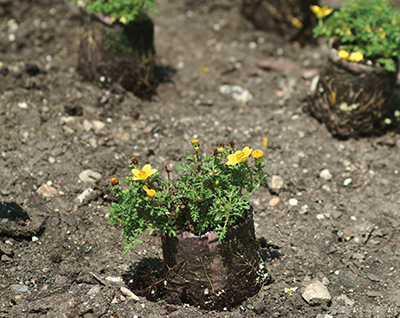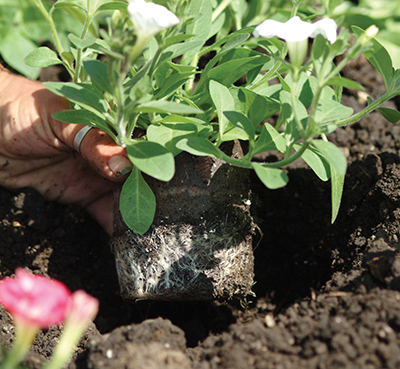May 13, 2021
Time to Plant! Tips & Technique
Jeff Gibson
Ball Seed Landscape Business Manager
For the upper Midwest, Great Lakes and Northeast it's planting time! (The Southern states are well down that road already.) That being said, it's always good to review the basics as you launch your crews "yardward".
The following Top Tips and advice can be found at our Landscape Tips page here. Top Tips are shared in English and Spanish.

Plant “Fresh”
It may go without saying given the BOOM in home gardening, plus homeowners' desires to get professionally installed plantings, that we need to get it right the first time!
By early May, you have your orders in to your growers (Right?!), and they are delivering as we speak. Resist the temptation to try and move forward the deliveries despite the clients desire for color NOW! Most will wait if you can convince them to wait just a bit more for better flowering. Many of the Northern states are at, or near frost-free dates already .
Remember in these markets that the ground may only be 55 degrees. Waiting a bit to install SunPatiens, Titan or Valiant Vinca (Catharanthus), Taishan Marigolds, and Zesty Zinnias is fine as they are all warm-season plants. Don't be shocked that they may take a while to fill in if planted early.
Planting something fully-in-flower, like Spreading Petunia Wave Purple Classic, will often go through a "stall" or transplant shock phase as the plant begins to put out new roots instead of flowers. Cold soil prolongs that process. Planting warmer season annuals later will result in a better show.
I know, I know … "My client expects flowers now!" Try to remind them that they want their plantings to look their best AND last the next 4-5 months in color!

When Installing …
Cultivate the soil before planting. Annuals do much better if beds are not compacted soil.
- When possible, work from perimeter – stay out of the bed
- Avoid “knee blight” – kneeling compacts the soil
- For large beds, cultivate from the center out and plant as you go, or cultivate the edge and work from one side to the other.
Water Your Flats Before Install!
The moisture content of plant tray soil should match the moisture
content of the destination bed soil. Match the crown of plant to the soil level (like you would a tree!). Note that root-bound plants suffer more transplant shock (depending on the species).
Soils 101
For all of you in the South that have planted and are just now seeing plant fill remember …
• Soil pH, or how tight nutrients hold to soil (pH “range”)
• Less than 6.0 = Nutrients leached = Small leaves, marginal chlorosis
• Greater than 7.5 = Nutrients bound tight = Young leaf chlorosis, stunting
• Low EC causes small, weak plants
• High EC causes marginal necrosis (brown edges) and stunted plants
For fertilization, there are three elements to promote plant health and growth:
N (nitrogen): “Gas” to grow
P (phosphorus): Stem stretch, roots and flowering
K (potassium): “Tone”, how rigid the plant is
And for Everyone! … Watering
Did you know that 50% of landscape water is wasted? More plants die due to overwatering than to under watering. Reduce your water as plants fill in the beds; when leaves touch, they’ve had enough!
Be sure to check out the new 2021 Thrive brochure online, or e-mail me for a printed hardcopy.
See you all on the other side of the planting rush!